ATP 3-12.3
ELECTRONIC WARFARE TECHNIQUES
JULY 2019
DISTRIBUTION RESTRICTION: Approved for public release; distribution is unlimited.
This publication supersedes ATP 3-36, dated 16 December 2014.
Headquarters, Department of the Army
�
This publication is available at the Army Publishing Directorate site
(https://armypubs.army.mil/), and the Central Army Registry site
(https://atiam.train.army.mil/catalog/dashboard).
�
Army Techniques Publication
No. 3-12.3
*ATP 3-12.3
Headquarters
Department of the Army
Washington, DC, 16 July 2019
Electronic Warfare Techniques
Contents
Page
PREFACE..................................................................................................................... v
INTRODUCTION ........................................................................................................ vii
OVERVIEW OF ELECTRONIC WARFARE ............................................................. 1-1
Introduction to Electronic Warfare ............................................................................. 1-1
Electronic Warfare Divisions...................................................................................... 1-1
Electromagnetic Environment ................................................................................... 1-2
ELECTRONIC WARFARE KEY PERSONNEL ........................................................ 2-1
Electronic Warfare Personnel .................................................................................... 2-1
Theater Army, Corps, Division and Brigade .............................................................. 2-1
ELECTRONIC WARFARE PLANNING AND EXECUTION ..................................... 3-1
Electronic Warfare Contributions to the Military Decision-Making Process .............. 3-1
Electronic Warfare Planning Considerations ............................................................. 3-1
Electronic Warfare Configurations ............................................................................. 3-6
Staff Contributions to Electronic Warfare Planning ................................................... 3-8
Targeting.................................................................................................................. 3-11
Electronic Warfare Execution .................................................................................. 3-13
Special Considerations During Execution ............................................................... 3-14
ELECTRONIC WARFARE PREPARATION AND ASSESSMENT.......................... 4-1
Electronic Warfare Preparation ................................................................................. 4-1
Integration of Electronic Warfare and Signals Intelligence ........................................ 4-2
ELECTRONIC WARFARE SUPPORT TECHNIQUES ............................................ 5-1
Planning Electronic Warfare Support ........................................................................ 5-1
Preparing Electronic Warfare Support ....................................................................... 5-1
Executing Electronic Warfare support ....................................................................... 5-2
ELECTRONIC ATTACK TECHNIQUES ................................................................... 6-1
Planning Electronic Attack ......................................................................................... 6-1
Preparing Electronic Attack ....................................................................................... 6-4
Executing Electronic Attack ....................................................................................... 6-5
Chapter 1
Chapter 2
Chapter 3
Chapter 4
Chapter 5
Chapter 6
Chapter 7
ELECTRONIC PROTECTION TECHNIQUES .......................................................... 7-1
Commander’s Electronic Protection Responsibilities ................................................ 7-1
Planning Electronic Protection .................................................................................. 7-1
DISTRIBUTION RESTRICTION: Approved for public release; distribution is unlimited.
*This publication supersedes ATP 3-36, dated 16 December 2014.
ATP 3-12.3
i
�
Contents
Electromagnetic Compatibility ................................................................................... 7-5
Electromagnetic Interference .................................................................................... 7-5
Staff Electronic Protection Responsibilities ............................................................ 7-10
Equipment and Communications Enhancements ................................................... 7-10
Appendix A
THE ELECTROMAGNETIC SPECTRUM ................................................................ A-1
Appendix B
JAMMING CALCULATIONS .................................................................................... B-1
Appendix C
ELECTRONIC WARFARE EQUIPMENT AND SYSTEMS...................................... C-1
Appendix D
FORMS, REPORTS, AND MESSAGES .................................................................. D-1
GLOSSARY ................................................................................................ Glossary-1
REFERENCES ........................................................................................ References-1
INDEX ............................................................................................................... Index-1
Figures
Figure 1-1. The electromagnetic spectrum and the electromagnetic environment ....................... 1-3
Figure 3-1. Electronic warfare in the targeting process ............................................................... 3-13
Figure 5-1. Example of a line-of-bearing ....................................................................................... 5-3
Figure 5-2. Example of a cut .......................................................................................................... 5-3
Figure 5-3. Example of a fix ........................................................................................................... 5-4
Figure 5-4. Concave baseline ........................................................................................................ 5-5
Figure 5-5. Convex baseline .......................................................................................................... 5-5
Figure 5-6. Baseline distance ........................................................................................................ 5-6
Figure 5-7. Circular error probability .............................................................................................. 5-7
Figure 5-8. False azimuth indicated by refraction error ................................................................. 5-8
Figure 5-9. Reflection of a radio wave ........................................................................................... 5-9
Figure 6-1. Spot and barrage jamming .......................................................................................... 6-9
Figure 6-2. Jamming to disrupt enemy battalion to company communications ........................... 6-11
Figure 7-1. Threat use of terrain masking ...................................................................................... 7-3
Figure A-1. Department of Defense use of the electromagnetic spectrum ................................... A-4
Figure A-2. The ionosphere—daytime and nighttime composition ................................................ A-7
Figure A-3. The electromagnetic spectrum and communication bands ........................................ A-8
Figure A-4. Relationship between magnetic field strength and current ......................................... A-9
Figure A-5. Amplitude modulation and frequency modulation ..................................................... A-10
Figure A-6. Pulse modulation ...................................................................................................... A-11
Figure A-7. Antenna heights and line of sight distances ............................................................. A-12
Figure A-8. Electric and magnetic fields of a radio wave ............................................................. A-13
Figure A-9. Vertical and horizontal polarization ........................................................................... A-13
Figure A-10. Circular and elliptical polarization ........................................................................... A-14
Figure A-11. Planar wavefront reflection ..................................................................................... A-15
Figure A-12. Super-refraction ducts ............................................................................................. A-16
Figure A-13. Diffraction of radio waves around a solid object ..................................................... A-17
ii
ATP 3-12.3
16 July 2019
�
Contents
Figure A-14. Diffraction of radio waves around a hillside .............................................................A-17
Figure A-15. Phase shift in multipath interference .......................................................................A-19
Figure A-16. Possible routes for ground waves ...........................................................................A-20
Figure A-17. Relationship between skip zone, skip distance, and ground wave .........................A-21
Figure A-18. Skywave paths ........................................................................................................A-22
Figure A-19. Refraction of frequency below the lowest usable frequency ...................................A-24
Figure B-1. Example minimum jammer power output calculations ................................................B-2
Figure B-2. Example maximum jammer power output calculation .................................................B-3
Figure D-1. Sample joint tactical air strike request ........................................................................ D-2
Figure D-2. Joint spectrum interference resolution report instructions ......................................... D-3
Figure D-3. Stop jamming message instructions .......................................................................... D-4
Figure D-4. Electronic warfare frequency deconfliction message instructions ............................. D-4
Figure D-5. Electronic warfare mission summary instructions ...................................................... D-5
Figure D-6. Electronic warfare tasking message instructions ....................................................... D-7
Tables
Table 3-1. Example of an electronic warfare running estimate ...................................................... 3-3
Table 7-1. Techniques for minimizing transmissions and transmission times ............................... 7-4
Table 7-2. Common jamming signals ............................................................................................. 7-6
Table 7-3. Electromagnetic interference troubleshooting battle drill .............................................. 7-9
Table A-1. Radio wave bands and frequencies .............................................................................A-1
Table A-2. Atmosphere layers, features, and their effects on radio waves ...................................A-5
Table A-3. Ionosphere layers and effects on radio waves .............................................................A-6
Table A-4. The proportional relationship between amplitude and energy .....................................A-9
Table A-5. Propagation characteristics of terrain .........................................................................A-20
Table A-6. Transmission angle and distance ...............................................................................A-23
Table B-1. Formula symbols ..........................................................................................................B-1
Table D-1. Electronic attack request format instructions .............................................................. D-1
16 July 2019
ATP 3-12.3
iii
�
This page intentionally left blank.
�
Preface
ATP 3-12.3 complements the electronic warfare tactics presented in FM 3-12. ATP 3-12.3 supersedes ATP
3-36, dated 16 December 2014.
The principal audience for ATP 3-12.3 is electronic warfare professionals, spectrum managers, unit leaders,
and Soldiers assigned to echelons theater army and below. Commanders and staffs of Army headquarters
serving as a joint task force or multinational headquarters also use applicable joint or multinational doctrine
for command and control of joint or multinational forces. Trainers and educators throughout the Army also
use this publication.
Commanders, staffs, and subordinates ensure their decisions and actions comply with applicable U.S.,
international, and, in some cases, host-nation laws and regulations. Commanders at all levels ensure that their
Soldiers operate in accordance with the law of war and the rules of engagement (FM 27-10). They also adhere
to the Army Ethic as described in ADRP 1.
ATP 3-12.3 uses joint terms where applicable. Selected joint and Army terms and definitions appear in both
the glossary and the text. For definitions shown in the text, the term is italicized, and the number of the
proponent publication follows the definition. This publication is not the proponent for any Army terms.
ATP 3-12.3 applies to the Active Army, Army National Guard/Army National Guard of the United States
and United States Army Reserve unless otherwise stated.
The proponent for this publication is the United States Army Cyber Center of Excellence. The preparing
agency is the Doctrine Branch, United States Army Cyber Center of Excellence. Send comments and
recommendations on a DA Form 2028, Recommended Changes to Publications and Blank Forms, to
Commander, United States Army Cyber Center of Excellence and Fort Gordon, ATTN: ATZH-ID
(ATP 3-12.3), 506 Chamberlain Avenue, Fort Gordon, GA 30905-5735, by e-mail to usarmy.gordon.cyber-
coe.mbx.gord-fg-doctrine@mail.mil.
16 July 2019
ATP 3-12.3
v
�
This page intentionally left blank.
�
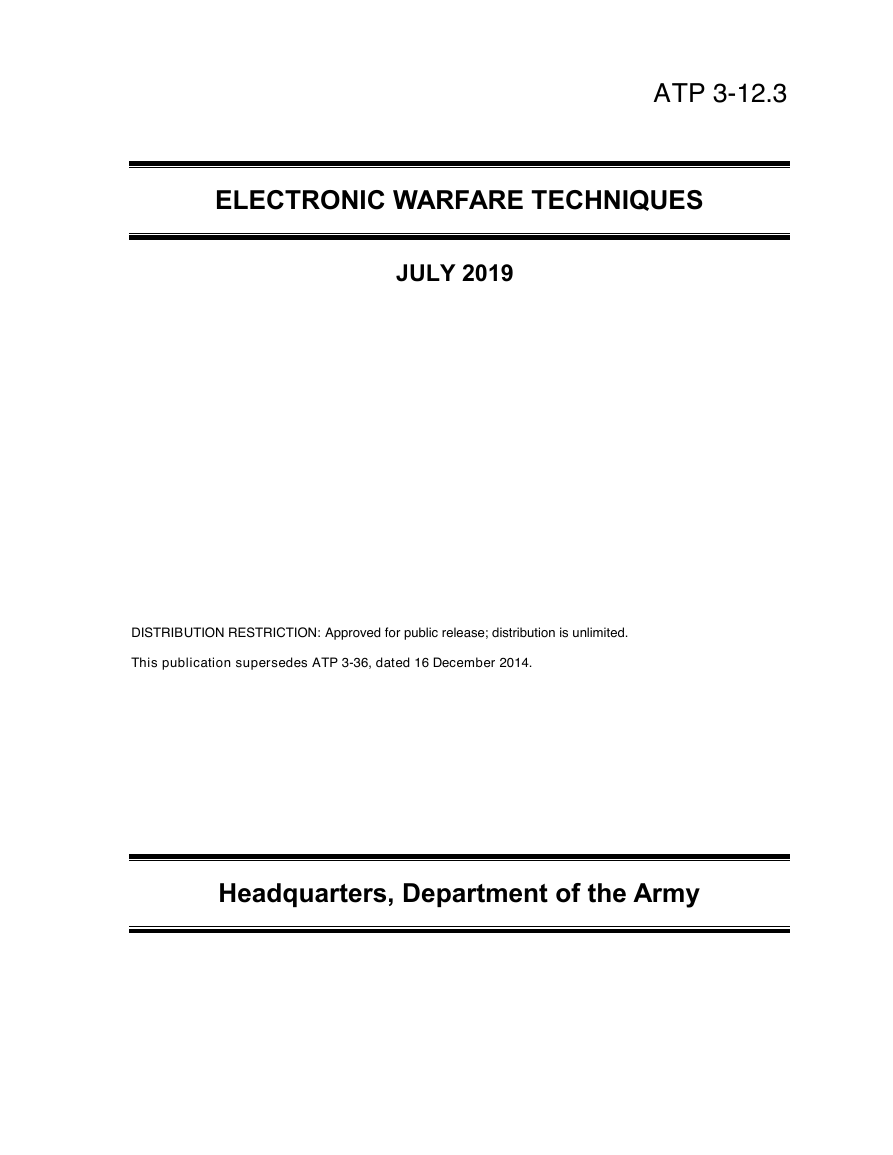
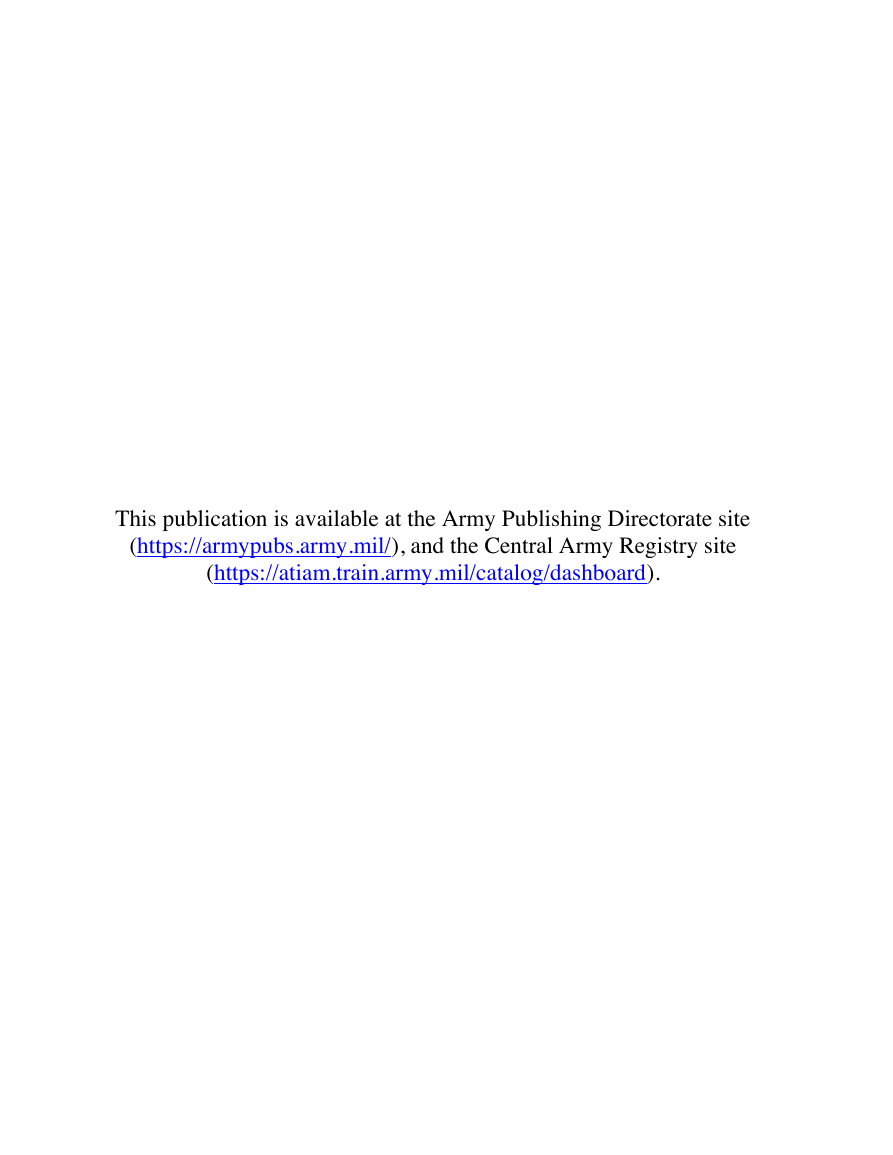
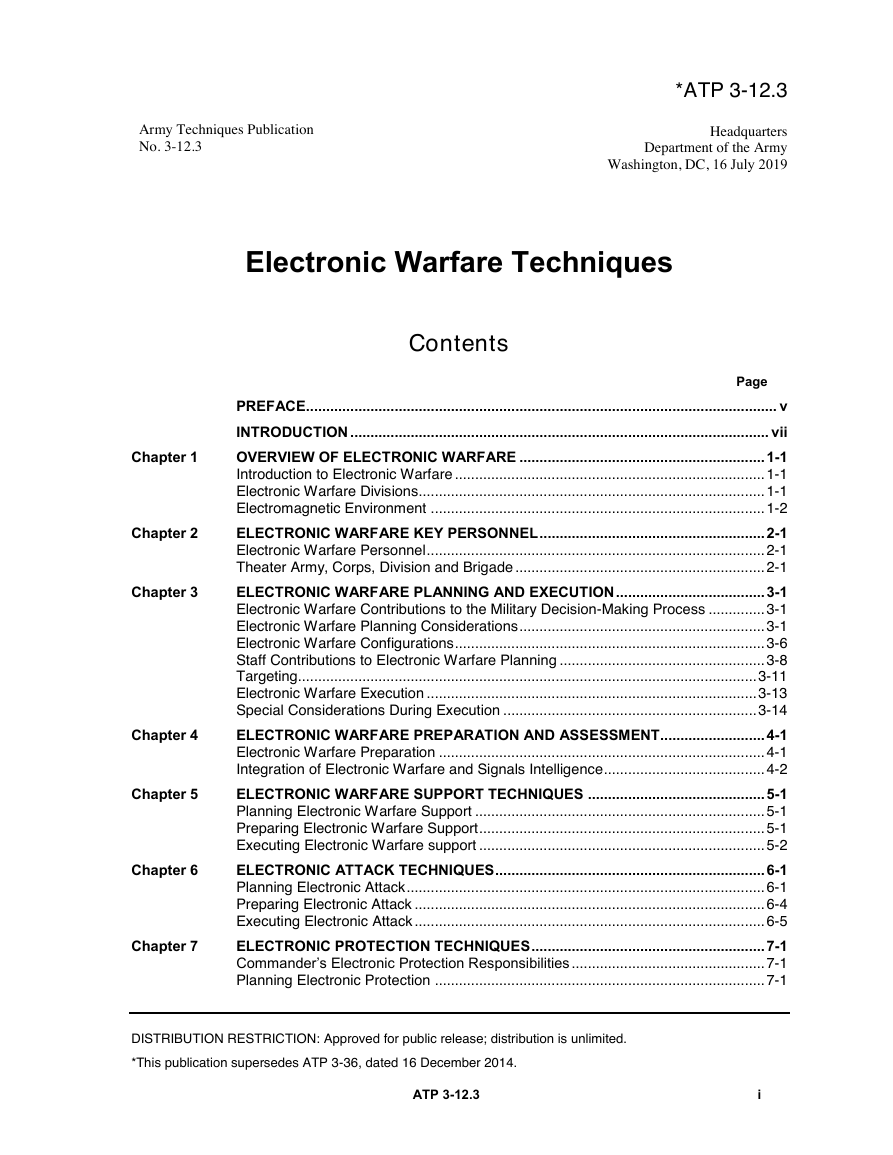

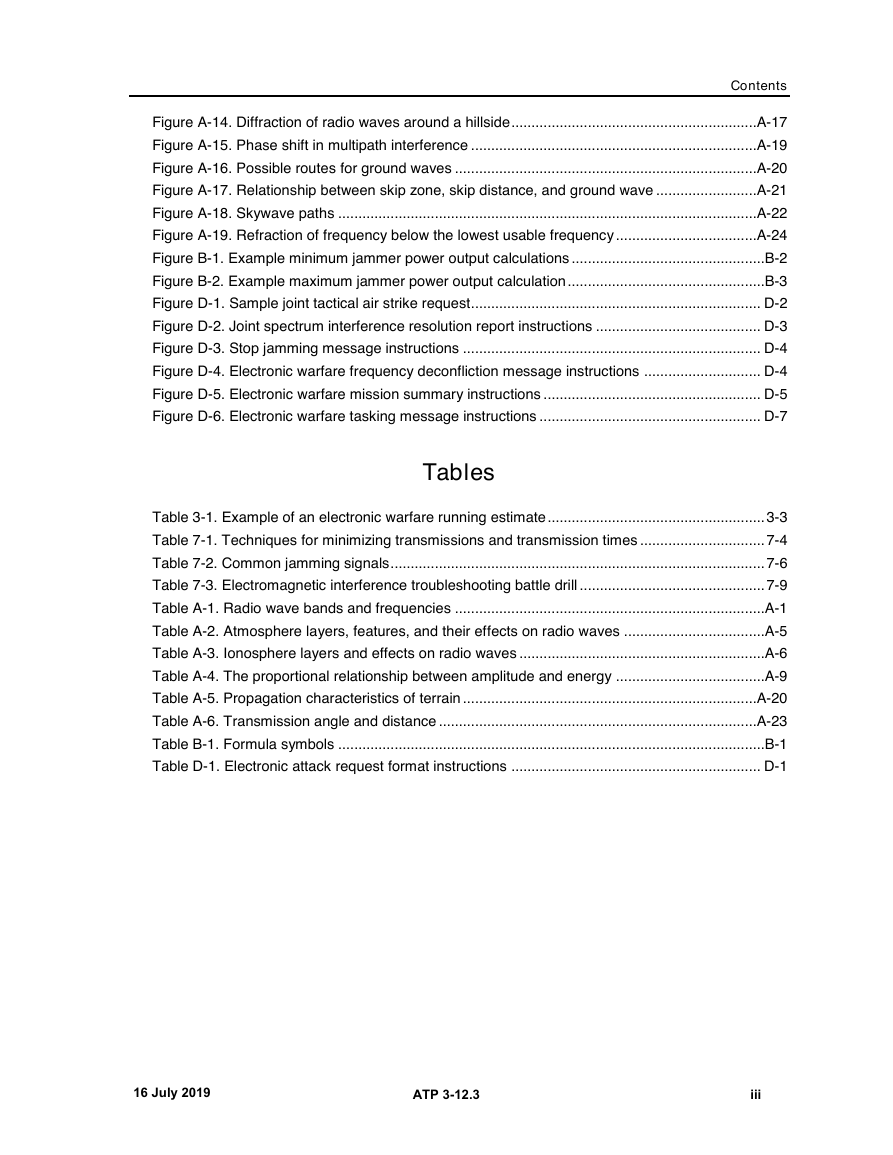

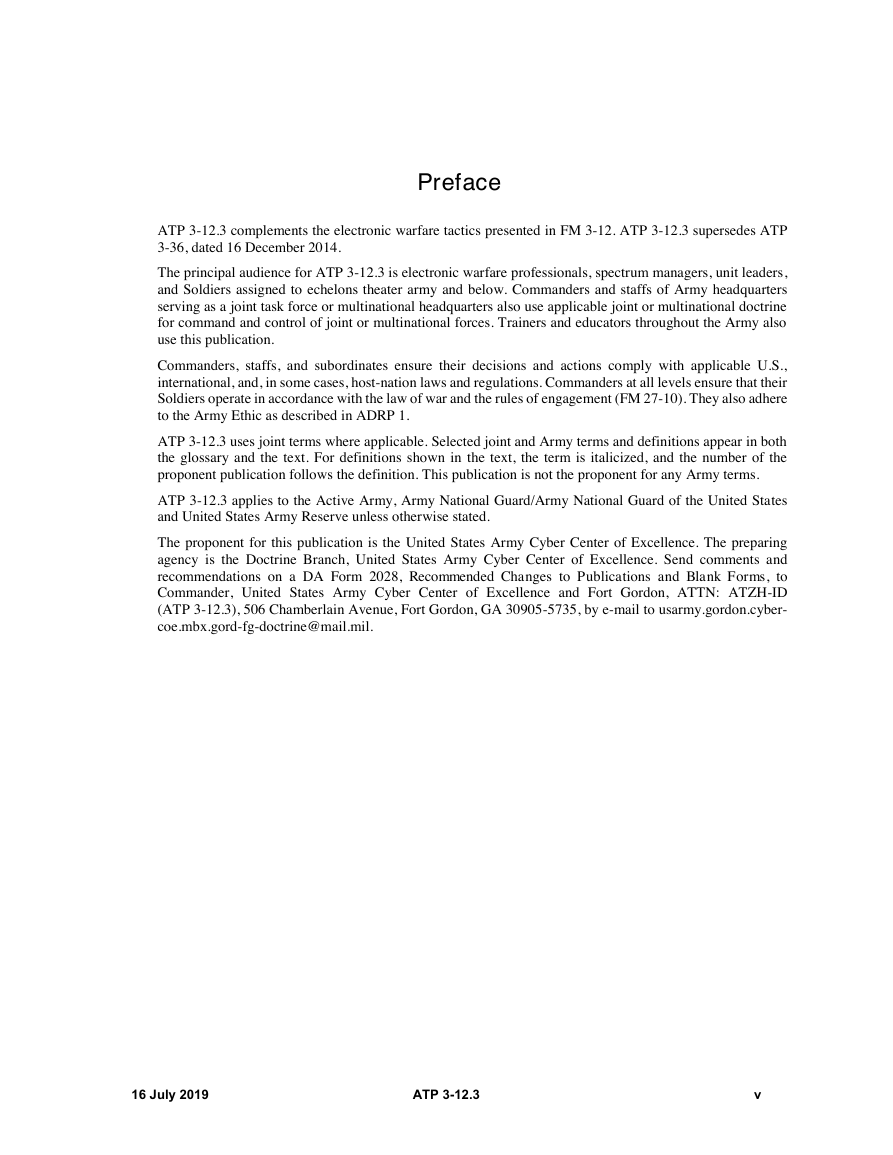









 2023年江西萍乡中考道德与法治真题及答案.doc
2023年江西萍乡中考道德与法治真题及答案.doc 2012年重庆南川中考生物真题及答案.doc
2012年重庆南川中考生物真题及答案.doc 2013年江西师范大学地理学综合及文艺理论基础考研真题.doc
2013年江西师范大学地理学综合及文艺理论基础考研真题.doc 2020年四川甘孜小升初语文真题及答案I卷.doc
2020年四川甘孜小升初语文真题及答案I卷.doc 2020年注册岩土工程师专业基础考试真题及答案.doc
2020年注册岩土工程师专业基础考试真题及答案.doc 2023-2024学年福建省厦门市九年级上学期数学月考试题及答案.doc
2023-2024学年福建省厦门市九年级上学期数学月考试题及答案.doc 2021-2022学年辽宁省沈阳市大东区九年级上学期语文期末试题及答案.doc
2021-2022学年辽宁省沈阳市大东区九年级上学期语文期末试题及答案.doc 2022-2023学年北京东城区初三第一学期物理期末试卷及答案.doc
2022-2023学年北京东城区初三第一学期物理期末试卷及答案.doc 2018上半年江西教师资格初中地理学科知识与教学能力真题及答案.doc
2018上半年江西教师资格初中地理学科知识与教学能力真题及答案.doc 2012年河北国家公务员申论考试真题及答案-省级.doc
2012年河北国家公务员申论考试真题及答案-省级.doc 2020-2021学年江苏省扬州市江都区邵樊片九年级上学期数学第一次质量检测试题及答案.doc
2020-2021学年江苏省扬州市江都区邵樊片九年级上学期数学第一次质量检测试题及答案.doc 2022下半年黑龙江教师资格证中学综合素质真题及答案.doc
2022下半年黑龙江教师资格证中学综合素质真题及答案.doc